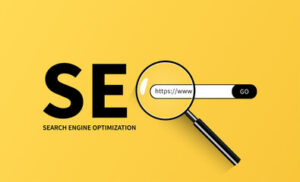Pests can cause harm by damaging crops, plants or homes. They can also contaminate food, erode soil and spread diseases. Some carry allergens that can trigger asthma, like rodent faeces or bird droppings.

Proper identification and prevention are essential tools for managing pests. Use pesticides sparingly, as a last resort. Always read and follow product labels. Visit https://www.benspest.biz/ to learn more.
Identifying pests accurately is the first step in an effective management program. Incorrect identification is the leading cause of control failures in most pest management programs. Incorrectly identifying pests is not only expensive and ineffective, but can also be dangerous for human health, animals, and the environment.
Pests must be accurately identified to determine their life cycle and development, as well as the factors that favor them and prevent their damage. Proper pest identification also allows control tactics to be applied at the time when the pest is most susceptible to being controlled and avoids injury to beneficial organisms.
Plants are damaged by non-living organisms (weather extremes, air pollutants, road salt, insufficient or excessive fertilization) just as much as they are by living organisms (pests). Sometimes this damage is mistaken for pest damage, but the problem may have been caused by a variety of other things such as weeds, disease, soil compaction, or lack of water and sunlight.
Vertebrate species (birds, reptiles, mammals) can be a nuisance in home gardens and parks as well as in agriculture, horticulture, and natural areas. Incorrectly identifying these pests can lead to overuse of potentially harmful chemicals in controlling them, as well as to the unnecessary destruction of habitats.
Insects are the most common pests of crops and landscapes, but other arthropods such as mites, nematodes, crustaceans, spiders, scorpions, caterpillars, beetles, wasps, flies, and ticks can also be a nuisance or damaging. Identifying these pests is not always easy, but good digital images and references, as well as knowledge of their behavior, needs, and life cycles, can be used to narrow down the list of possible suspects.
A number of pest identification resources are available online, but be aware that the accuracy of information posted on the Internet is variable. To improve your odds of accurate identification, build a library of insect field manuals that contain color pictures or visit your local Land Grant University extension office for fact sheets and other printed references on insect identification and crop specific pests. In addition, many IPM programs provide insect scouting guidelines to assist growers in identifying pests and their damage in the fields.
Pest Prevention
Pest prevention is an ongoing effort to limit a plant’s exposure to pesticides and other toxic agents. It requires more than just the initial inspection by a trained technician, which will identify entry points, nesting sites and signs of infestation. It also requires a commitment to the pest prevention system by everyone in the facility. For example, it may mean determining who on staff is responsible for inspecting food shipments and who will be responsible for cleaning locker rooms to prevent employees from accidentally bringing in pests on clothing or shoes. It may also mean establishing a protocol for how and when to wet wash certain areas of the facility rather than dry washing them, in order to reduce moisture that attracts pests like flies and cockroaches.
Taking a proactive approach to pest management can save a plant money by lessening the amount of time and products it takes to eradicate a problem. It can also keep the plant in compliance with FSMA regulations, which is a major boon to any company’s bottom line. It can even prevent product recalls and the resulting damage to a brand’s reputation, which are expensive for both the company and its customers.
In crop growing, pest prevention involves understanding a crop’s life cycle and the life cycles of common pests to prevent them from attacking the crops during their most vulnerable periods. It is also important to recognize how different weather conditions and environmental factors affect insect pressure from season to season.
When pest populations do increase, it is important to take a step back from the problem and consider other options before resorting to chemical controls. For example, consider whether the pests can be managed through good sanitation practices, removing water sources that draw insects or changing cultural conditions to make the area less attractive to them. If that fails, it may be necessary to apply a minimal amount of pesticide and target specific stages of the pest’s life cycle to minimize damage or risk to humans and other organisms.
Structural pest control includes the elimination of nesting and hiding places as well as sealing cracks, crevices and other structural openings that allow pests to enter a building. It also includes a regular wellness program that checks for the presence of pests throughout the building. For instance, technicians will inspect door sweeps and seal expansion joints to help prevent pests from entering a building. They will also conduct interior and exterior treatments using a variety of methods, including spraying, baiting and trapping, depending on the needs of each facility.
Pest Control
Pest control is an integrated approach to managing pests that involves preventive methods such as inspection, monitoring, and scouting along with suppressive actions when needed. Control measures include cultural practices, biological controls, physical or mechanical control, and chemical pesticides.
A pest is any organism (insects, viruses, nematodes, fungi, weeds, vertebrate animals, or other living things) that negatively impacts human health, crop production, property value, animal habitats, or natural ecosystems. Pests damage or devalue crops, gardens, lawns, homes, businesses, and other buildings; contaminate food and water supplies; spread serious diseases; and disrupt natural or man-made environments.
Prevention is the primary tool to minimize pest problems, and pest control is necessary when pest prevention fails. The Integrated Pest Management (IPM) approach to pest control is the most effective means of managing pests and their damaging effects.
Integrated pest management begins with inspection – identifying pest activity and the conditions that allow them to thrive. This information is used to develop an action threshold that indicates when pest control should be initiated. The threshold may be determined by examining the level of damage caused in different situations such as the amount of weeds in an athletic field, the number of caterpillars eating corn leaves, or the number of rodents invading a warehouse.
Once an action threshold is established, the following steps are implemented:
Monitoring – observing pest populations and their damage to determine when control measures need to be taken. This includes scouting, identifying conditions that lead to pest outbreaks, and regular inspections of structures to ensure they remain pest free.
Cultural and physical controls – strategies that change the environment to make it less suitable for pests and more suitable for desirable species. This may include modifying growing conditions, using physical barriers such as fences or screens to exclude pests, and the use of organic pesticides to reduce environmental impact.
Chemical pesticides – the use of liquid or granular products to kill or control pests. Proper use of pesticides requires training and personal protective equipment (PPE). PPE consists of long-sleeved shirts, pants, closed-toe footwear, eye and face protection, and gloves.
Pesticides
Chemical pesticides are the main tool used by farmers and gardeners to control pests. They are designed to affect the pest so it can no longer find food, reproduce or grow. The way they do this is by blocking receptors on the pest’s cells or by poisoning it. Pesticides are very expensive, and it’s important to use them sparingly and responsibly. Many chemicals have gone through years of testing and have been shown to achieve their intended purposes without causing unreasonable risk to people or the environment (Cardno, 2015).
When applying pesticides, it is important to read the label first. It will contain information on hazards, first aid, and personal protective equipment (PPE). Follow the directions for safe application of the product. It is recommended to only apply the amount of chemical that you need, and to avoid spraying near streams, wells, schools or edible gardens. Spraying on a windy day can cause drift, so you should plan your application accordingly. Also, do not apply if it is raining within a few hours of the spraying.
It is also important to avoid spraying in the presence of bees, birds and other pollinators. Many common insecticides are toxic to them, so try to use non-toxic alternatives. Neonicotinoids are especially dangerous to bees, so it is best to avoid them and any products that contain them. If you must, be sure to use them sparingly and only in the garden where the plants can re-grow.
Another way to reduce the need for pesticides is through physical pest control, which involves trapping or removing the pest. This could include a mouse trap in the home, or plowing and tilling of soil in agriculture.
Other preventative measures include avoiding soil that is too sandy or waterlogged, and keeping the plants healthy so they can resist or recover from diseases and insects. It is important to always wash your hands after handling any kind of plant material. And of course, never eat unwashed produce or other foods that have been sprayed with chemicals. Prolonged exposure to pesticides can lead to health effects such as gastrointestinal issues, nerve and hematological symptoms, and respiratory problems.

